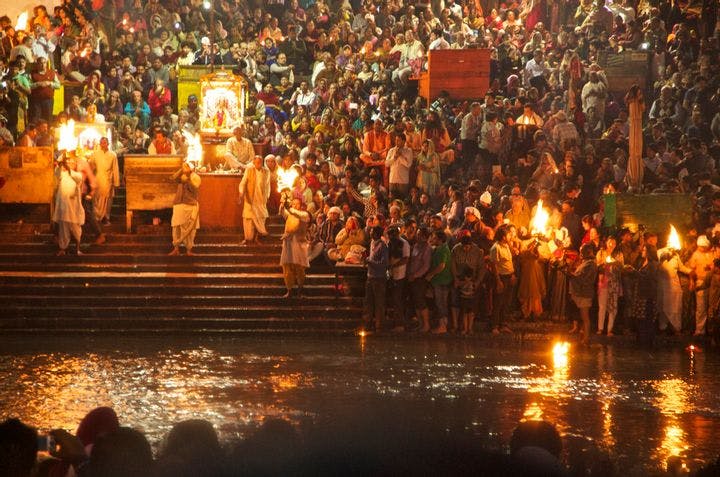Summer 2010
Modern Gods
– The Wilson Quarterly
In India, religion is becoming uniform, politicized, and, often, fundamentalist—a menace to the pluralism and tolerance that have long characterized the country’s religious life.
Modernization bodes change for country dwellers. In India, even the provincial Hindu gods are not immune to the forces of standardization and commercialization, observes travel writer William Dalrymple, who just published Nine Lives: In Search of the Sacred in Modern India. But the extinction of tree sprites and snake gods does not mean that India is going the way of Europe and becoming more secular. Rather, religion is becoming uniform, politicized, and, often, fundamentalist—a menace to the pluralism and tolerance that have long characterized the country’s religious life.
Hinduism—a religion with no founder and no single founding text—is by its nature diffuse and multifaceted. As Dalrymple points out, individual deities were long believed to “regulate the ebb and flow of daily life,” right down to the needs of village livestock and the sweetness of well water. It was colonial scholars who “organized the disparate, overlapping multiplicity of non-Abrahamic religious practices, cults, myths, festivals, and rival deities that they encountered across South Asia into a new world religion that they dubbed ‘Hinduism.’ ”
DVDs, television channels, and the bustle of modern life—who has time to listen to five nights’ worth of a medieval epic poem when the highlights are available on CD?—are “destroying the local and varied flavors of Hinduism.” Local gods and goddesses are giving way to “the national hyper-masculine hero deities, especially Lord Krishna and Lord Rama,” and a national brand of Hinduism is being cultivated by what one scholar describes as “the emerging state-temple-corporate complex.”
Especially among the rising middle class, pilgrimages are extremely popular, and an appetite for new and elaborate rituals has created a shortfall of qualified priests. Aside from the overtly Hindu nationalism purveyed by the Bharatiya Janata Party, religion has infiltrated the state—firmly secular for years after its birth—in subtle ways. Political campaigns for all parties feature mass pujas (prayers) and public yagnas (fire sacrifices), and state funding for yagnas, yoga camps, temple tourism, ashrams, and training schools for Hindu priests has increased dramatically.
In the eyes of India’s urban middle class, Hinduism’s provincial incarnations are nothing more than the superstitions of peasants. This intolerance extends to other religions—most notably, Islam, the faith of some 150 million Indians. As in neighboring Pakistan and elsewhere in South Asia, the mystical version of Islam, Sufism, is under attack, “as the cults of local Sufi saints—the warp and woof of popular Islam in India for centuries—lose ground to a more standardized, middle-class, and textual form of Islam, imported from the Gulf and propagated by the Wahhabis, Deobandis, and Tablighis in their madrassas.”
Though Dalrymple holds out hope that the tradition of syncretic mysticism will remain alive in India, he concedes that in mosques and temples around the country, “identities are hardening.”
THE SOURCE: “Rush Hour for the Gods” by William Dalrymple, in The National Interest, May–June 2010.
Photo courtesy of Flickr/New Delhices
